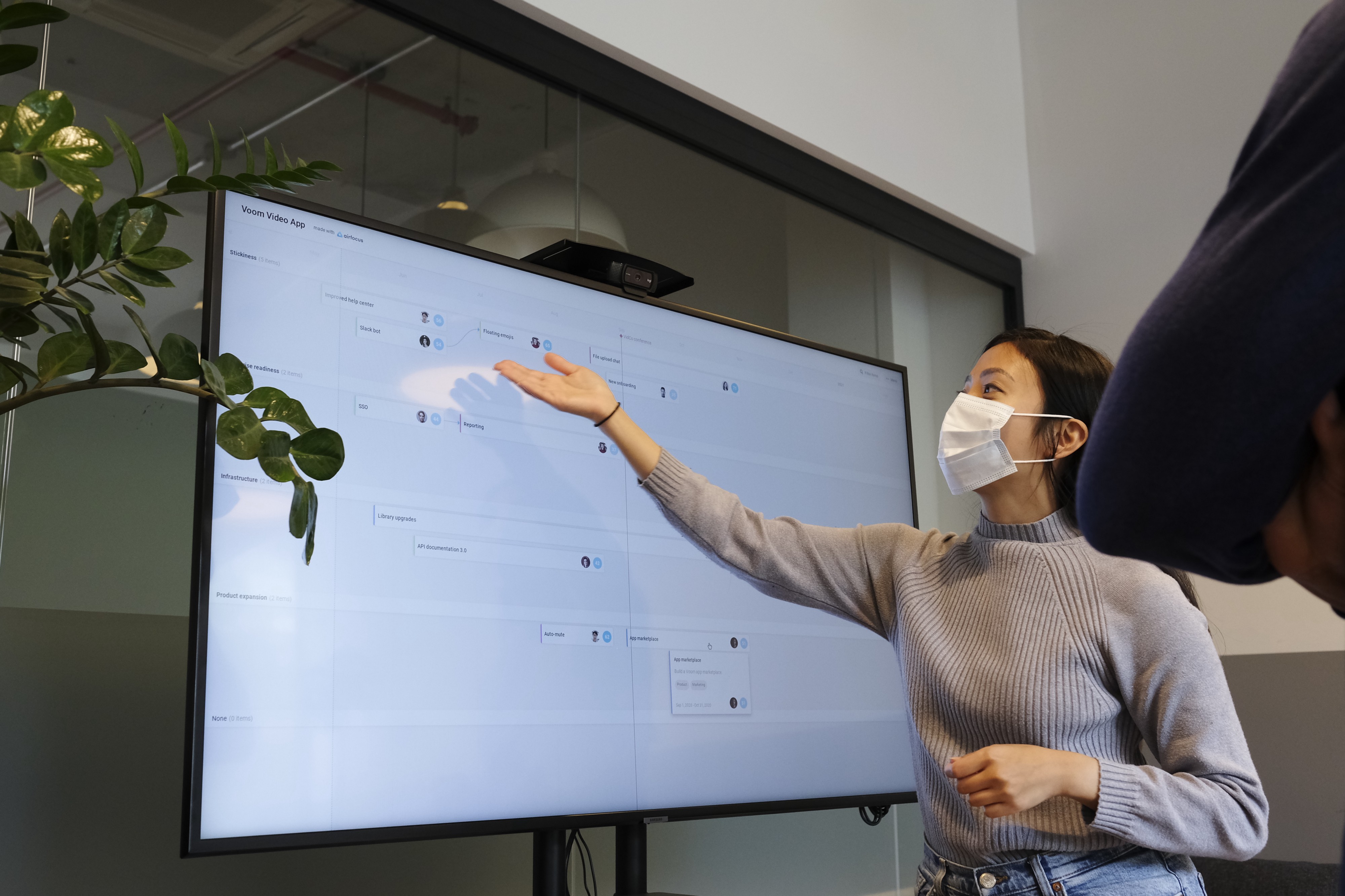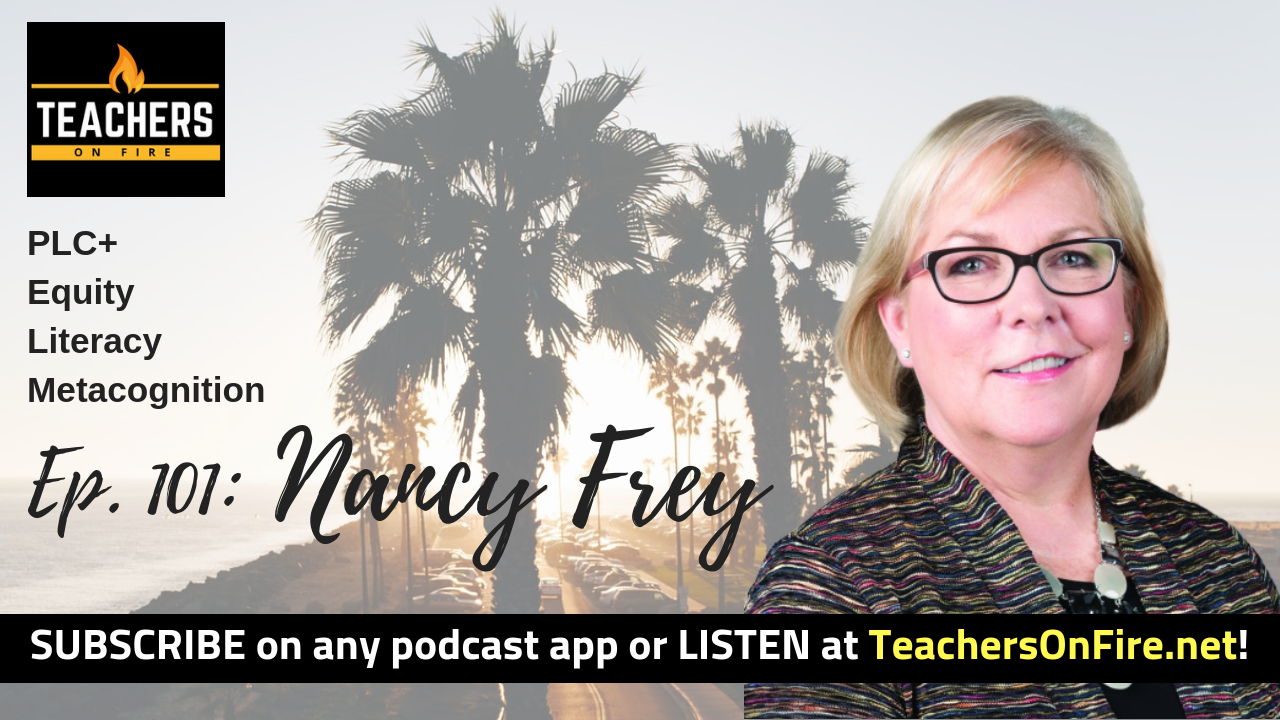These two learning management systems are a match made in LMS heaven.

My history with Google Classroom
I’ve been using Google Classroom since 2016. I’ve taught in a total of three Google-hosted schools in the years since I first started using it, so I’ve had plenty of time to build competence and confidence with this learning management system.
For the uninitiated, Google Classroom is a platform that utilizes the storage and sharing powers of Google Drive. It’s not especially powerful and doesn’t offer the nicest user experience. But it’s clean, efficient, and does most of what teachers, students, and parents need it to do.
I remain a big fan of Google Classroom and respect the ways this (still free) platform has iterated over time to improve its management of teacher instruction and student learning.
My history with Seesaw
This is now my third year using Seesaw as an eighth grade teacher. When I was first introduced to this learning management system in 2018, I was skeptical.
What was the point of Seesaw when we already used Classroom? Wasn’t it a little redundant? Wouldn’t parents be annoyed by yet another point of contact?
It didn’t take me too long to become a Seesaw believer, however. It was slow at first, but over time — with more risk-taking and experimentation — things started to click. I began to recognize what sets Seesaw apart, and how it could play a powerful role in the learning process for my students.
Experiencing both platforms from the parent perspective
With my own middle schooler also plugged into both platforms, I was able to experience Google Classroom and Seesaw from the parent side as well. It was a great experience.
From Google Classroom, I received daily automated emails informing me of class announcements, learning activities that were due soon for submission, and any assignments that were missing or overdue.
From Seesaw, I received notifications that let me know when my son (or his teacher) had posted photos, videos, or other products of student learning. I was able to view, like, and comment on his work in real time.
From Google Classroom, I received raw information and dates about my son’s learning. From Seesaw, I could see it and hear it in practice.
It was a great tandem.
Why should teachers, schools, and districts use Google Classroom?

Let’s start at the beginning of the learning management conversation. Why should schools use Google Classroom at all?
In my view, there are lots of reasons. Here are some of them:
- It’s free.
- It’s completely cloud-based, allowing students to use Chromebooks as their primary device for learning (significant cost savings for schools and districts).
- Smooth integration with Google Drive allows teachers to create learning activities in the G Suite and share them with ease.
- Google Drive education accounts offer unlimited storage. Also for free.
- The Google Classroom to-do list allows students to track all of their outstanding work in one place.
- The ‘Make a Copy for Every Student’ option allows teachers to drop into student work (on Docs, Slides, Sheets, Drawings, Jamboard, etc.) and offer feedback in real time. Amazing!
- It also tracks assignment submissions in real time, so teachers can see at a glance how many assignments are outstanding and who the holdouts are.
- Its integration with Google Meet allows a convenient and secure way to meet virtually with remote learners. Google admins can disable student creation of Google Meets, making the link in Classroom 100% secure.
- It allows teachers to design numberless rubrics based entirely on curricular competencies and proficiencies.
- Integration with Google Forms allows teachers to post formative assessments that score themselves (if you’re into that) and give students instant feedback.
- Private comments on every posted assignment allow for efficient teacher-student communication, feedback, and support.
- Tight integration with Google Calendar means that Classroom due dates appear automatically in teacher and student calendars.
- Countless third party apps and platforms allow quick importing of class lists or quick exporting of learning activities (from the app to Google Classroom). EdPuzzle and Khan Academy are two well-known examples.
- The ‘Guardian Updates’ feature automatically does the important work that teachers have done manually for decades: they let parents know which learning activities are due soon for submission, and which learning products are missing or overdue.
- It allows for quick and convenient email communication with selected guardians.
Okay, so you’re sold on Google Classroom. If you’re reading this post at all, perhaps you already were. Let’s move to the question that brought you to this post in the first place.
Why should teachers, schools, and districts use Seesaw?

If Google Classroom already does so much, why should we use Seesaw as well?
Here are some of the reasons why schools and districts should also use Seesaw (and to be clear — this is NOT a paid promotion).
- It’s more mobile-friendly than Google Classroom. There’s a designated app for parents that optimizes beautifully on mobile devices.
- It’s powerful but simple enough to allow students of all ages to construct, share, and reflect on their learning.
- It makes the learning journey more visible for all parties: for students, parents, and teachers. Google Classroom never shows learning activities to parents, and it can’t track work effectively over more than one school year.
- It’s built for engagement, interaction, authentic audiences, and shared ownership. By allowing parents to view images, videos, and content, and then like and comment on those artifacts from their child’s learning, we’re letting them into the process. We’re also letting students know that their learning matters and that it happens in community. It expands the audience from the narrow vertical experience of teacher-student and student-teacher.
- It allows in-app screencasting, allowing students to discuss their learning while typing, writing, or manipulating a stylus (without leaving the app). Thanks to Seesaw, I can watch and listen to every one of my 25 eighth grade Math students narrate their process as they provide solutions to given problems. That’s the kind of magic that is difficult to pull off on Google Classroom without a lot more clicks and the use of third party applications.
- It allows teachers to easily add audio instructions and feedback.
- It redefines teaching and learning for all stakeholders. Seesaw helped me evolve in my thinking about the nature of the learning process itself. Sure, I was already using learning targets to plan my lessons before Seesaw, but my teaching practice on this platform has only clarified my vision around purpose. Every time I share a photo or video of student work or students in action, the rationale should be more than just assembling a scrapbook of moments. These artifacts should show learning in motion toward clearly defined goals. And that’s a critical paradigm.
- Seesaw allows us to build a more complete picture of a student’s learning. A child’s Seesaw journal is a record of all of their learning artifacts and reflections, viewable in a single stream or filtered by skill or subject folder. These pieces of learning don’t need to represent perfection — instead, they should show learning happening over time.
- Seesaw allows schools to build longitudinal records of student learning over multiple years. Although I’ve never seen this in person, schools should be able to track a single student’s learning over 13 years in a single place. To track a student’s journey of growth for even a portion of that time — say, a student’s middle school learning journey — would be incredibly powerful.
- Seesaw makes student-led conferences more impactful and interesting. It promotes agency, ownership, and student voice by allowing students to walk parents and teachers through their learning journey in a user-friendly format — basically impossible to pull off in Google Classroom.
A shorthand way to think of the two platforms
In short, Google Classroom remains the place where students DO most of their learning. Seesaw should be the place where they SHOW it.
That isn’t a perfect way to understand the partnership between the two platforms, but I think it’s a good summary.
Won’t students and parents be overwhelmed by two learning management systems?
That’s a fair question, but it hasn’t matched my experience.
Helping students understand how to manage both platforms has been fairly simple. What it comes down to is maintaining Google Classroom as the primary place for students to track learning activities. By posting any Seesaw activities on Google Classroom, students are reminded to complete it simply by checking their Google Classroom to-do list.
I’ve been on the parent side of both platforms at the same time, and it was far from overwhelming. But for any parents concerned about a perceived blizzard of communications and notices coming from multiple directions, my advice is to make their inbox their one-stop-shop.
Google Classroom and Seesaw both utilize email, so parents should feel no need or obligation to visit either platform without an emailed notification (they actually can’t visit Google Classroom, anyway).
My recommendation: centralizing teacher communication
Schools and districts who live in Google Classroom and Seesaw will want to talk about how and where teachers communicate with parents. Yes, both apps generate a fair number of automated notifications, but that’s not what I’m thinking of here.
I’m talking about particular messages, updates, or information that teachers need to share with parents. Things like class newsletters, field trip forms, or important announcements. Which app should teachers use?
There is no right or wrong answer. Both Classroom and Seesaw can be used to communicate quickly and easily with parents. In my context, our school is asking teachers to use a school app to share and access news, reporting, and class communication. Whether your school decides to communicate through Classroom, Seesaw, or a third option, the key will be consistency.
The learning business is now the change business
This year I have the challenge of helping to introduce Seesaw to teachers who have been using Google Classroom for years. As teachers, it can be frustrating to get the sense that we’re being asked to make another fundamental change to our practice every time we turn around. I completely get that.
Educators should never be asked to give up our capacity to think critically. We’re fighters, and I’d be less concerned as an administrator if I heard strong and sensible pushback to a policy versus hearing nothing at all.
But I also want to remind educators that we are in the learning business. And because it’s the twenty-first century, we are also in the change business. Our profession was turned upside down by COVID-19, but we’ve been in flux for a long time before the pandemic.
Ten years ago I used an overhead projector in my classroom and carried monstrous stacks of papers to and from school each day. A lot has changed in the years since.
Adapting to change is going to be a part of our profession from here on out, and it’s a necessary part of our growth and improvement as learning leaders. Whether it’s Seesaw, another LMS, or another fundamental change to our assessment practices, it won’t be the last change we’ll make.
Adopting a positive mindset that embraces growth will be essential. And as we model that lifestyle of learning, our students will recognize it and benefit.
Our ultimate filter
When it comes to curriculum, instruction, and assessment of learning, our decision-making should always come down to two questions.
Is this good for kids?
Is this good for learning?
When it comes to these two platforms, I believe the answers are yes and yes.





